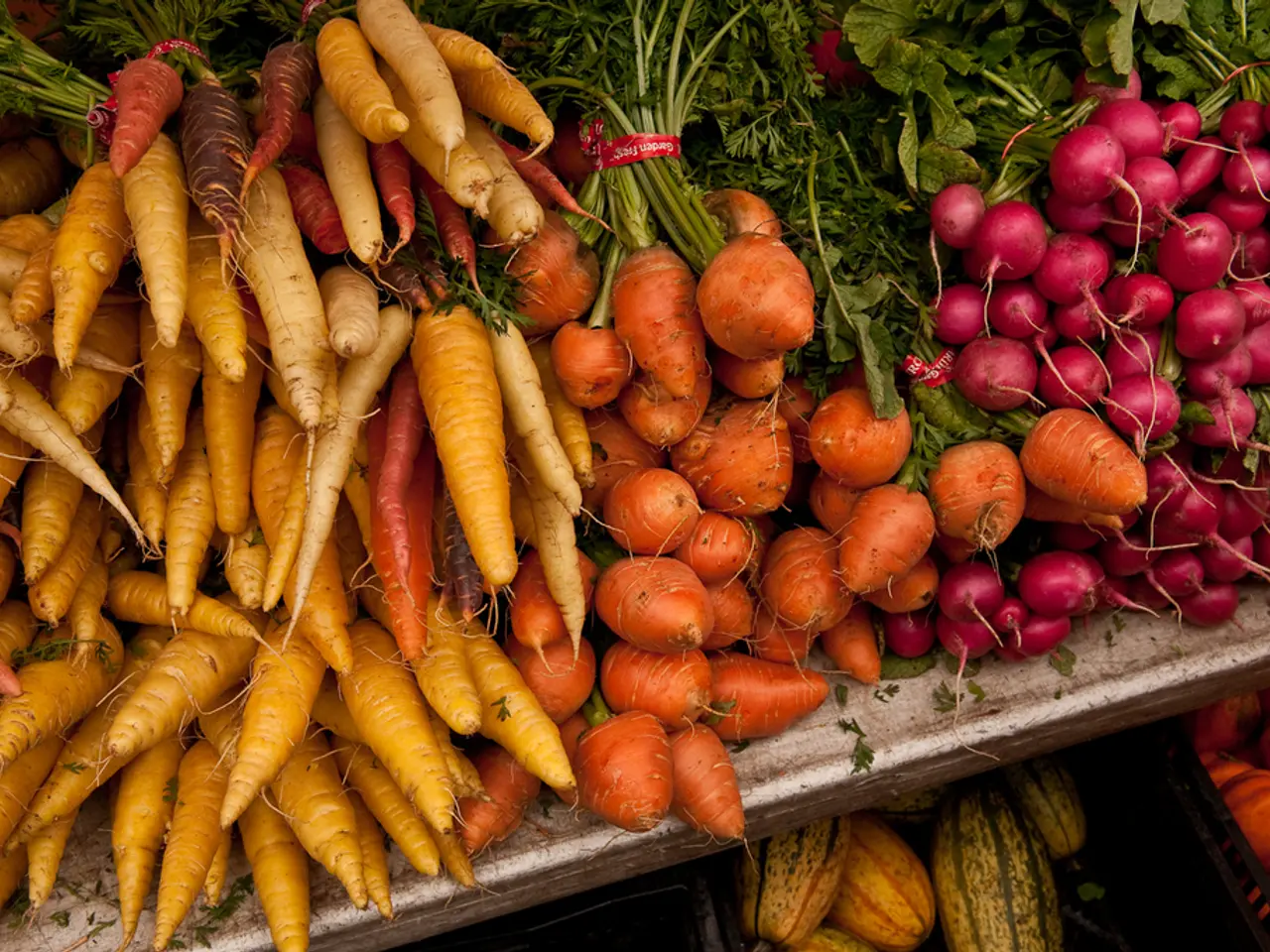Innovative Ideas for Vertical Vegetable Gardens in Tight Quarters - 7 Space-Saving Methods Revealed
In the pursuit of growing fresh produce in limited spaces, vertical vegetable gardening has emerged as a creative and efficient solution. This innovative approach to gardening can transform even the smallest of areas into thriving vegetable patches.
One innovative idea is repurposing old ladders as multi-level plant stands, providing an easy way to cultivate a variety of vegetables in a stacked arrangement. For vines and climbing plants, wire mesh or fencing can be attached to walls, while bamboo or wooden frames can offer support for growth.
Vertical hydroponic systems, which grow plants without soil in stacked racks or towers, are another practical option. These modern systems provide an ideal environment for plants to thrive, requiring minimal space and maintenance.
In terms of plant choices, lettuce, spinach, peas, cherry tomatoes (dwarf varieties), oregano, parsley, and strawberries are all suitable for vertical setups. To ensure healthy growth, it's essential to position shelves or planters to capture ample sunlight, arrange taller plants at the top, and provide adequate drainage and watering.
Other practical options include installing trellises, stakes, hanging baskets, or shelves to hold containers or pots vertically. A unique idea for balcony gardens is growing vegetables upside down in a hanging pot or bucket with drainage holes.
For those with a knack for DIY projects, creating a tree branch trellis can be both fun and functional. Sturdy sticks are sunk into the ground to create the vertical space, with diagonal or horizontal sticks attached to strengthen it. This rustic structure provides a unique structure for growing vining and climbing vegetables.
For fruit trees, espaliering is an elegant solution for growing fruit in small spaces. This technique involves training the tree to grow flat against a wall, creating a stunning display while saving space.
Squash plants can also benefit from vertical gardening. A squash arch can be created using metal frames, PVC pipes, or pre-made garden arches, allowing the plants to climb a vertical surface like a trellis or arch. This saves space by allowing multiple squash plants to grow in a compact area.
Tomatoes, cucumbers, beans, and peppers are also suitable plants for upside-down vertical gardening. Onions can even be grown vertically in an old plastic bottle with holes cut in the side and filled with soil.
With the rising popularity of vertical vegetable gardening among gardeners with limited space, it's clear that this innovative approach is here to stay. For those interested in learning more, resources such as articles, videos, and an e-book "How to Grow Delicious Tomatoes" are available, sign up for the platform newsletter to access these and more.
The concept of growing a vertical garden is not new, but it continues to evolve and adapt to the needs of modern gardeners. With a bit of creativity and the right plants, anyone can transform their small space into a lush, productive garden.
In the same spirit of innovation, repurposing an old bookshelf as a vertical hydroponic system can cater to a mix of herbs, such as oregano and parsley, in individual plants pots. Moreover, introducing a mini 'home-and-garden' oasis with a vertical gardens of lettuce and spinach, strategically placed near a sunlit window, can bring a touch of nature to one's living room or bedroom lifestyle.




